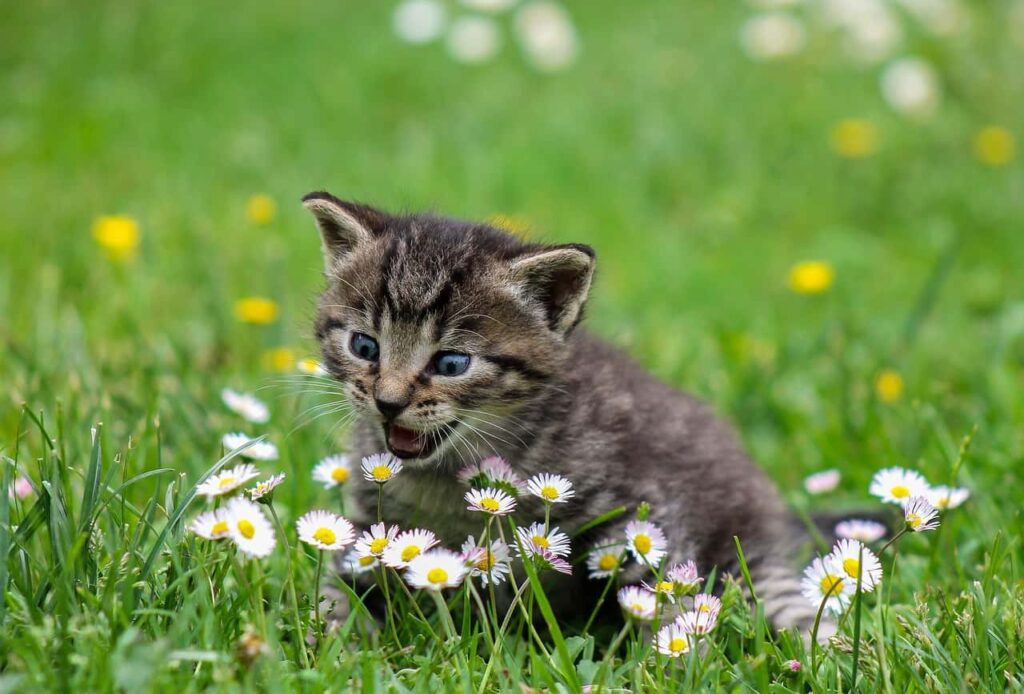
Contents
Introduction: The issue of cats in gardens
Are pesky neighborhood cats turning your garden into their playground? As much as we adore our feline friends, their antics in our precious outdoor spaces can sometimes lead to frustration.
But fear not, for there are effective ways to keep those curious kitties out of your garden while maintaining harmony with the animal kingdom. Let’s explore some clever strategies to help you reclaim your green sanctuary without ruffling furry feathers!
Understanding a Cat’s Behavior
Cats are fascinating creatures with unique behaviors that can sometimes be puzzling to humans. Understanding a cat’s behavior is essential to keep them out of your garden. One important thing to know is that cats are territorial animals; they mark their territory by spraying or scratching, which could include your precious plants.
Cats love to explore and hunt; the garden provides an ideal environment. Their natural curiosity and instincts drive them to roam freely, making keeping them away from your green space challenging.
Furthermore, cats are creatures of habit; once they find a cozy spot in your garden, they are likely to return again and again. This repetitive behavior makes establishing effective deterrents crucial before they early claim your garden as their playground.
By understanding why cats behave the way they do, you can implement strategies that will help discourage them from turning your beautiful garden into their sanctuary.
Natural Deterrents for Cats
Several deterrents can help those looking for a more natural approach to keeping cats out of their gardens. One option is planting strong-smelling herbs like lavender, rosemary, or lemon thyme around the perimeter – cats dislike these scents and may avoid the area altogether.
Another effective natural deterrent is citrus fruits – strategically placing orange or lemon peels can deter cats from entering your garden. Similarly, sprinkling coffee grounds or cayenne pepper around the edges of your garden can also act as a repellent.
Some cat owners have found success using Coleus canina (also known as the scaredy-cat plant), which emits an odor that repels cats without harming them. Additionally, creating noise distractions such as wind chimes or motion-activated water sprayers can startle cats and discourage them from returning.
Experimenting with different natural deterrent methods may be necessary to find what works best for your situation.
Physical Barriers to Keep Cats Out
Physical barriers can be a highly effective solution for keeping cats out of your garden. One popular option is installing chicken wire or mesh around the perimeter of your garden beds. This can prevent cats from digging and entering the area.
Another practical barrier is using prickly plants like rose bushes as a natural deterrent. Cats typically avoid areas with thorns or sharp edges, making these plants an excellent defense against feline intruders.
Consider adding a cover made from lattice or netting for raised garden beds to keep cats from accessing the soil. These covers allow sunlight and water to penetrate while creating a barrier that deters curious kitties.
Alternatively, you can strategically place rocks or large stones around your garden to create obstacles that discourage cats from walking through certain areas. The uneven surface makes it uncomfortable for them to traverse, prompting them to seek alternative paths.
By implementing physical barriers creatively in your garden space, you can effectively keep cats at bay without causing harm to these curious creatures wandering into your outdoor oasis.
Behavioral Training for Cats
Behavioral training for cats can be an effective way to deter them from causing havoc in your garden. Cats are intelligent animals that respond well to positive reinforcement. Start by setting clear boundaries and using rewards when they respect those boundaries.
One technique is to use a spray bottle filled with water to discourage unwanted behavior, like digging or scratching. Another option is to create noise distractions, such as clapping your hands or using a whistle when you catch the cat misbehaving.
It’s imperative to maintain consistency when training cats. They thrive on routine and will learn quickly if you are consistent with your approach. Remember, patience is essential – cats may take time to adjust their behavior.
By incorporating behavioral training into your strategy, you can help keep cats out of your garden while maintaining a positive relationship with these curious creatures.
Creating a Friendly Space for Cats Outside the Garden
Creating a friendly space for cats outside the garden benefits your furry friends and helps maintain harmony between them and your outdoor sanctuary. Consider setting up a designated area with comfortable bedding where cats can relax and enjoy the outdoors without intruding on your prized plants.
Install a scratching post or provide toys to keep them entertained, reducing their interest in exploring other areas of your garden. Water features like fountains or shallow bowls can attract cats away from sensitive plant beds, giving them an alternative source of entertainment.
Plant cat-friendly herbs such as catnip or cat grass in pots around the perimeter of your garden to draw their attention away from more delicate vegetation. By creating an inviting space explicitly tailored for feline enjoyment, you can ensure that they are less likely to wander into areas where they’re not welcome.
Conclusion:
Maintaining a garden while coexisting with cats can be challenging, but it is possible to find a harmonious balance. You can enjoy your beautiful garden without constant feline disruptions by understanding cat behavior, utilizing natural deterrents and physical barriers, providing behavioral training, and creating friendly spaces for cats outside the garden.
Cats are curious creatures who may see your garden as an enticing playground. With patience and persistence, you can implement strategies to keep them out of areas where they are not welcome while allowing them to enjoy designated spots in your yard.
Finding this equilibrium will ensure your plants and furry friends thrive in their respective environments. So go ahead and put these effective ways into practice – your garden (and the neighborhood cats) will thank you!
